How to create the nine most successful startups at Stanford
Located in the heart of Silicon Valley, Stanford University is considered one of the best American universities, and at the same time, the most expensive. For example, one year of undergraduate study costs a student $ 50-70 thousand, and a two-year MBA program at Stanford for a cumulative cost costs $ 200 thousand.
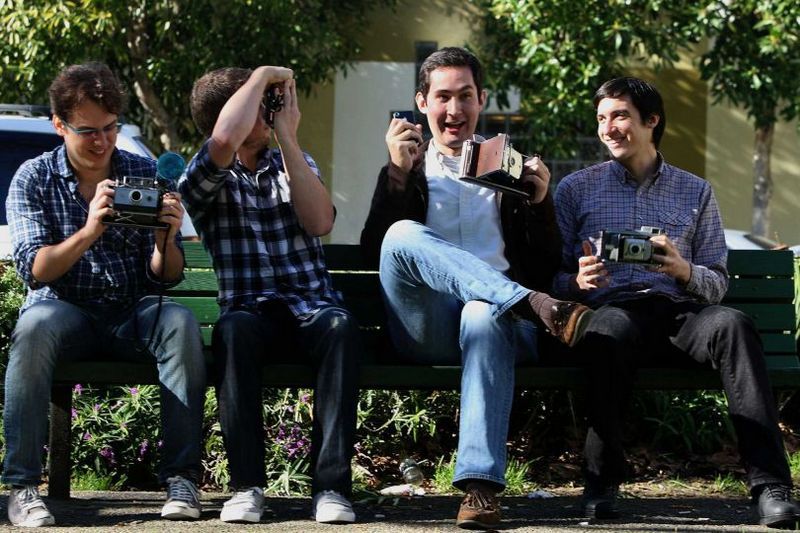
Instagram: Michael Krieger (first left), Kevin Sistrom (third left)
')
However, this does not discourage those wishing to pursue higher education in an institution where the world's highest percentage of teachers (6 students are 1 teacher) and 16 of them are Nobel laureates, and another 4 are Pulitzer Prize winners. Read here lectures come Bill Gates and the former head of Hewlett Paccard Carly Fiorina, an honorary professor at Stanford University was Steve Jobs who lived nearby Palo Alto, who himself did not receive a higher education.
In addition, largely due to the proximity to the main technology companies in California (both geographically and through graduates working in them), Stanford University has become a kind of personnel incubator for Silicon Valley. Bill Hewlett and Dave Packard, Google founders Sergey Brin and Larry Page, Len Bosak and Sendy Lerner, who founded Cisco Systems, president of Yahoo! Marissa Mayer and creator of PayPal Peter Thiel.
Actually, the valley itself is built on land belonging to Stanford. In the 50s, the university, which today earns more than a billion dollars a year, experienced financial difficulties, although it had vast unused lands, which it had no right to sell according to the testament of its founder, Leland Stanford. Then the university management found a Solomon solution, deciding to donate land for long-term lease to high-tech companies. The first in the technology park of Stanford settled Varian Associates. Soon Eastman Kodak, General Electric, Lockheed, Hewlett-Packard and many others followed her example.
The author of the publication Business Insider, Madeline Stone, in her article highlighted some of the most successful start-ups that the world owes to Stanford over the past two decades.
Instagram. The creators of the famous photo service Kevin Sistrom and Mike Krieger met through a network of Stanford alumni
After graduating from college in 2006 with a degree in science and technology management, Kevin Sistrom began developing a location-based photo-sharing application. When he realized that he needed a co-founder, he turned to a network of graduates and found Mike Krieger, a native of Brazil, who graduated two years after Sistrom.
Trulia. The co-founders of the popular real estate service Pete Flint and Sami Inkinen met during classes at the Graduate School of Business

As is often the case, the idea was born as the fruit of its own quest. Flint and Inkinen decided to create Trulia when faced with difficulties in renting housing in Palo Alto. The US-leading online real estate aggregator was developed over two semesters in the Stanford class Startup Garage.
The following Monday after graduation, Flint and Inkinen were scheduled to meet with potential investors. As of June 2014, Trulia is visited monthly by 54 million users. In July of this year, Trulia was bought by Zillow for $ 3.5 billion.
StubHub. The idea of an online ticket marketplace for events was presented at a business plan competition at Stanford
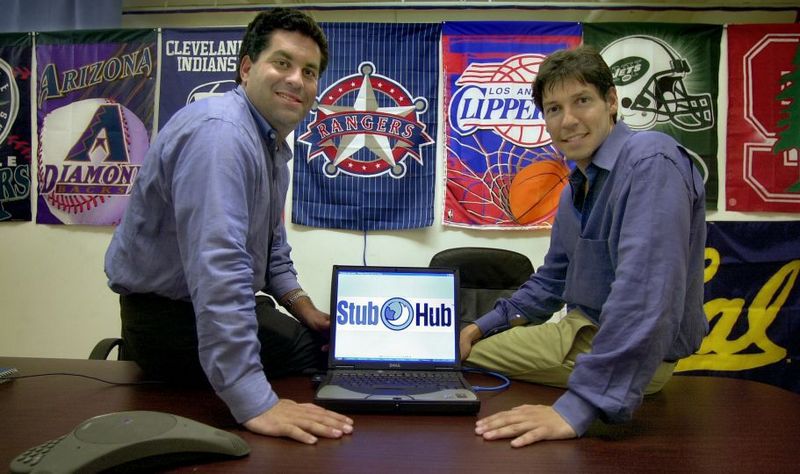
Eric Baker and Jeff Flour met at the Stanford Graduate School of Business. It turned out that both had experience in online ticket sales. After some time, Flur and Baker submitted a business plan application called Needaticket.com for a business plan competition. After the plan reached the final, they withdrew it from the competition, and in 2000 Flur left school to devote himself entirely to the project. The StubHub site, which was developed by them in the Stanford computer classes, after some time became one of the major players in the market for selling tickets to sports and entertainment events. In 2007, the company was bought by eBay for $ 300 million.
Loopt. Popular geosocial service was founded by three Stanford second year students.
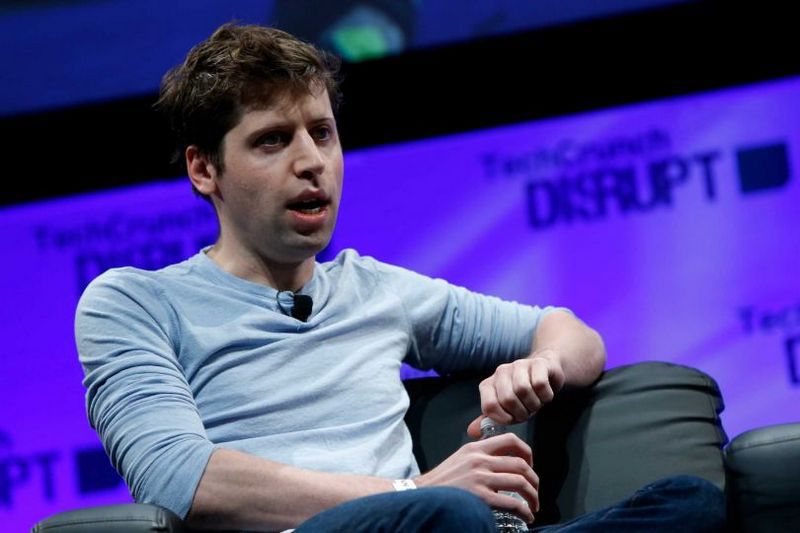
Sam Altman, Nick Sivo, and Elok Deshpandi thought out Loopt's concept for the second year of joint study. Soon after the application was developed, all three of them dropped out of college. In 2012, Loopt was absorbed by Green Dot Corporation for $ 43.4 million, and Altman is now known as the president of the most promising technological incubator Y Combinator. This year, he returned to Stanford as the head of the class “How to create a startup,” which will be taught by Paul Graham (Viaweb), Peter Thiel (PayPal), Marc Andreessen (Netscape), Ron Conway (angel investor, Google early stages and many others) and CEO of Yahoo! Marissa Mayer.
Bonobos. Brian Spali and Andy Dunn invented their online men's trousers store at Stanford Graduate School of Business.

Legend has it that Slept made the first Bonobos trousers, which became the prototype, in the house in which the co-founders lived on the university campus. Slept later became the Trunk Club stylist, and Dunn remained as CEO of Bonobos, which, as a result of the recent round of funding, collected $ 55 million.
Snapchat. Co-founders Evan Spiegel and Bobby Murphy lived in the same cottage Kappa Sigma

"We were not cool," - said Murphy Forbes - But worked to become them. " Today, Snapchat has more than 100 million registered users and is close to completing a $ 20 million round of financing, with a valuation of $ 10 billion.
Lytro. Ren Ng developed the Lytro camera technology when he wrote his doctoral dissertation at Stanford

Ng received a bachelor’s degree from Stanford University and a doctoral degree, which was based on the light field technology, then successfully applied when creating the Lytro camera. During the 40th anniversary celebration of the Computer Science Department, Ng met the founder of K9 Ventures and as a graduate, Manu Kumar, with the result that Lytro received a powerful impetus for development.
Pulse. The creators of the service have just arrived at the computer design department when the first iPad was released. Seeing in his appearance room for activity, they set to work
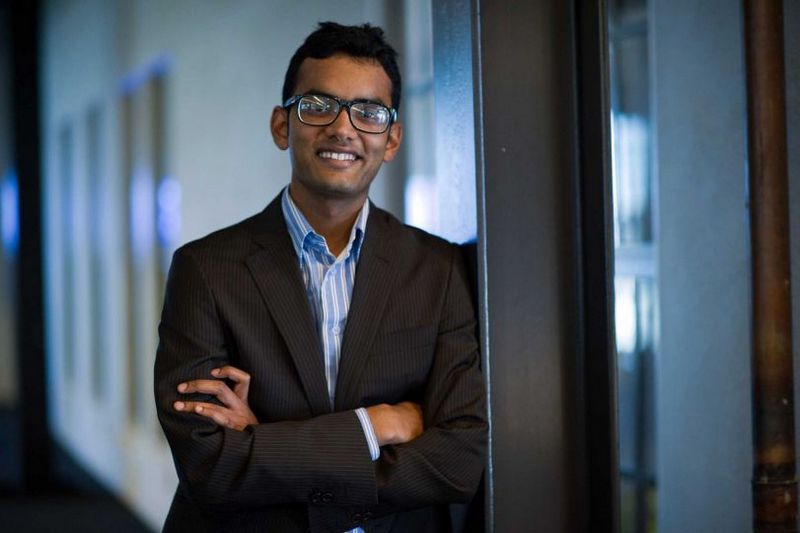
Ankit Gupta and Akshay Kothari began developing their news aggregator on the day Apple introduced the tablet computer to the world, and after a few months at WWDC, Steve Jobs noted Pulse as one of the best apps for the iPad. In April 2013, LinkedIn acquired Pulse for $ 90 million.
Coursera. The largest online educational platform was founded by two Stanford professors
Duffy Koller and Andrew Ng have long been colleagues at the Stanford Computer Science Department. The idea of Coursera grew out of the computer-based class that Ng taught in 2011, which was extremely popular in the department. 104,000 people enrolled in it via the Internet, more than 46,000 completed at least one homework, 13,000 of them received a course certificate. Today Coursera offers users more than 600 free courses, seven million students are registered on the service. Ng recently became the leading Baidu research scientist, Koller remains the President of Coursera to this day. The platform continues to function successfully and attract millions of investments.
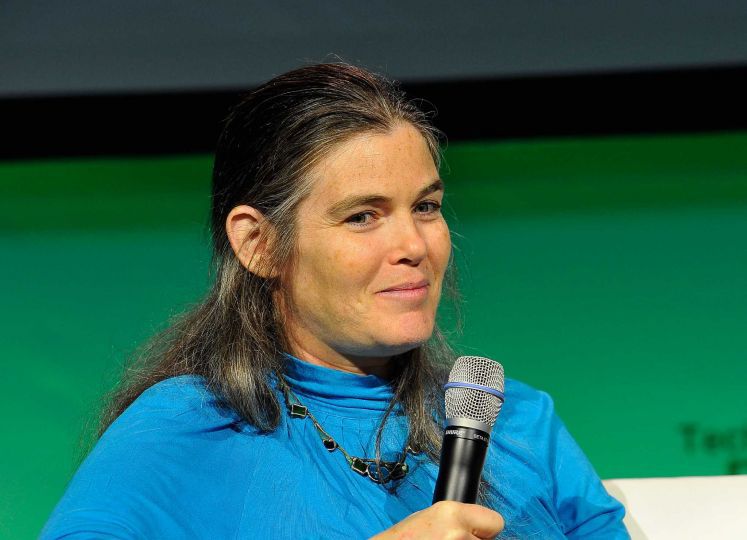
Due to many factors, Stanford University dominates among the leading US higher education institutions in terms of the number of successful entrepreneurial careers that graduates and students have made. Three years ago, CB Insights, a research firm, came to this conclusion comparing six higher schools — Stanford, Harvard, the University of California at Berkeley, New York University, the University of Pennsylvania and the Massachusetts Institute of Technology. Investment activity is significantly higher at Stanford.

And it's not just a good geographical location in the middle of Silicon Valley and high density of business angels per square meter. The Stanford campus is the right place to create a new successful company, with its first-class engineering and business programs, an extensive base of graduates known for their corporate spike, not inferior to Harvard, and their own business accelerators (StartX spends $ 1.2 million on investing startups annually in which at least one of the founders is a student at Stanford).
Unfortunately, there is no analogue of such an educational institution in Russia, with all due respect to the leading Russian universities. Startups, in fact, stew in their own juice in a much less comfortable environment. Our collective investment platform, VCStart, to the best of its capabilities, helps IT start-ups to obtain funding and ultimately make a qualitative step in their development. Register your projects, find investors, create and develop. Welcome!

Instagram: Michael Krieger (first left), Kevin Sistrom (third left)
')
However, this does not discourage those wishing to pursue higher education in an institution where the world's highest percentage of teachers (6 students are 1 teacher) and 16 of them are Nobel laureates, and another 4 are Pulitzer Prize winners. Read here lectures come Bill Gates and the former head of Hewlett Paccard Carly Fiorina, an honorary professor at Stanford University was Steve Jobs who lived nearby Palo Alto, who himself did not receive a higher education.
In addition, largely due to the proximity to the main technology companies in California (both geographically and through graduates working in them), Stanford University has become a kind of personnel incubator for Silicon Valley. Bill Hewlett and Dave Packard, Google founders Sergey Brin and Larry Page, Len Bosak and Sendy Lerner, who founded Cisco Systems, president of Yahoo! Marissa Mayer and creator of PayPal Peter Thiel.
Actually, the valley itself is built on land belonging to Stanford. In the 50s, the university, which today earns more than a billion dollars a year, experienced financial difficulties, although it had vast unused lands, which it had no right to sell according to the testament of its founder, Leland Stanford. Then the university management found a Solomon solution, deciding to donate land for long-term lease to high-tech companies. The first in the technology park of Stanford settled Varian Associates. Soon Eastman Kodak, General Electric, Lockheed, Hewlett-Packard and many others followed her example.
The author of the publication Business Insider, Madeline Stone, in her article highlighted some of the most successful start-ups that the world owes to Stanford over the past two decades.
Instagram. The creators of the famous photo service Kevin Sistrom and Mike Krieger met through a network of Stanford alumni
After graduating from college in 2006 with a degree in science and technology management, Kevin Sistrom began developing a location-based photo-sharing application. When he realized that he needed a co-founder, he turned to a network of graduates and found Mike Krieger, a native of Brazil, who graduated two years after Sistrom.
“When they say that college is not worth the money that you have to pay for it, I definitely do not agree with this,” Sistrom once said in an interview with Forbes. “The learning experience and the knowledge gained during it, which may currently seem unnecessary, will eventually come in handy again and again.”In April 2012, Sistrom and Krieger sold Instagram to Facebook for $ 1 billion.
Trulia. The co-founders of the popular real estate service Pete Flint and Sami Inkinen met during classes at the Graduate School of Business

As is often the case, the idea was born as the fruit of its own quest. Flint and Inkinen decided to create Trulia when faced with difficulties in renting housing in Palo Alto. The US-leading online real estate aggregator was developed over two semesters in the Stanford class Startup Garage.
The following Monday after graduation, Flint and Inkinen were scheduled to meet with potential investors. As of June 2014, Trulia is visited monthly by 54 million users. In July of this year, Trulia was bought by Zillow for $ 3.5 billion.
StubHub. The idea of an online ticket marketplace for events was presented at a business plan competition at Stanford

Eric Baker and Jeff Flour met at the Stanford Graduate School of Business. It turned out that both had experience in online ticket sales. After some time, Flur and Baker submitted a business plan application called Needaticket.com for a business plan competition. After the plan reached the final, they withdrew it from the competition, and in 2000 Flur left school to devote himself entirely to the project. The StubHub site, which was developed by them in the Stanford computer classes, after some time became one of the major players in the market for selling tickets to sports and entertainment events. In 2007, the company was bought by eBay for $ 300 million.
Loopt. Popular geosocial service was founded by three Stanford second year students.

Sam Altman, Nick Sivo, and Elok Deshpandi thought out Loopt's concept for the second year of joint study. Soon after the application was developed, all three of them dropped out of college. In 2012, Loopt was absorbed by Green Dot Corporation for $ 43.4 million, and Altman is now known as the president of the most promising technological incubator Y Combinator. This year, he returned to Stanford as the head of the class “How to create a startup,” which will be taught by Paul Graham (Viaweb), Peter Thiel (PayPal), Marc Andreessen (Netscape), Ron Conway (angel investor, Google early stages and many others) and CEO of Yahoo! Marissa Mayer.
Bonobos. Brian Spali and Andy Dunn invented their online men's trousers store at Stanford Graduate School of Business.

Legend has it that Slept made the first Bonobos trousers, which became the prototype, in the house in which the co-founders lived on the university campus. Slept later became the Trunk Club stylist, and Dunn remained as CEO of Bonobos, which, as a result of the recent round of funding, collected $ 55 million.
Snapchat. Co-founders Evan Spiegel and Bobby Murphy lived in the same cottage Kappa Sigma

"We were not cool," - said Murphy Forbes - But worked to become them. " Today, Snapchat has more than 100 million registered users and is close to completing a $ 20 million round of financing, with a valuation of $ 10 billion.
Lytro. Ren Ng developed the Lytro camera technology when he wrote his doctoral dissertation at Stanford

Ng received a bachelor’s degree from Stanford University and a doctoral degree, which was based on the light field technology, then successfully applied when creating the Lytro camera. During the 40th anniversary celebration of the Computer Science Department, Ng met the founder of K9 Ventures and as a graduate, Manu Kumar, with the result that Lytro received a powerful impetus for development.
Pulse. The creators of the service have just arrived at the computer design department when the first iPad was released. Seeing in his appearance room for activity, they set to work

Ankit Gupta and Akshay Kothari began developing their news aggregator on the day Apple introduced the tablet computer to the world, and after a few months at WWDC, Steve Jobs noted Pulse as one of the best apps for the iPad. In April 2013, LinkedIn acquired Pulse for $ 90 million.
Coursera. The largest online educational platform was founded by two Stanford professors
Duffy Koller and Andrew Ng have long been colleagues at the Stanford Computer Science Department. The idea of Coursera grew out of the computer-based class that Ng taught in 2011, which was extremely popular in the department. 104,000 people enrolled in it via the Internet, more than 46,000 completed at least one homework, 13,000 of them received a course certificate. Today Coursera offers users more than 600 free courses, seven million students are registered on the service. Ng recently became the leading Baidu research scientist, Koller remains the President of Coursera to this day. The platform continues to function successfully and attract millions of investments.

Due to many factors, Stanford University dominates among the leading US higher education institutions in terms of the number of successful entrepreneurial careers that graduates and students have made. Three years ago, CB Insights, a research firm, came to this conclusion comparing six higher schools — Stanford, Harvard, the University of California at Berkeley, New York University, the University of Pennsylvania and the Massachusetts Institute of Technology. Investment activity is significantly higher at Stanford.

And it's not just a good geographical location in the middle of Silicon Valley and high density of business angels per square meter. The Stanford campus is the right place to create a new successful company, with its first-class engineering and business programs, an extensive base of graduates known for their corporate spike, not inferior to Harvard, and their own business accelerators (StartX spends $ 1.2 million on investing startups annually in which at least one of the founders is a student at Stanford).
Unfortunately, there is no analogue of such an educational institution in Russia, with all due respect to the leading Russian universities. Startups, in fact, stew in their own juice in a much less comfortable environment. Our collective investment platform, VCStart, to the best of its capabilities, helps IT start-ups to obtain funding and ultimately make a qualitative step in their development. Register your projects, find investors, create and develop. Welcome!
Source: https://habr.com/ru/post/239113/
All Articles